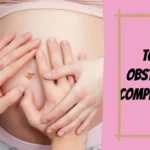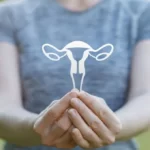
Are you one of the many women who thought their days of having a baby were over after getting their tubes tied? Think again! It’s actually possible to get pregnant with tubes tied, and we’re here to show you how. In this comprehensive guide, we’ll walk you through various methods, including tubal ligation reversal, IVF, IUI, natural fertility methods, lifestyle changes, and alternative treatments. So, if you’re ready to make your dream of having a baby a reality, keep reading to learn how you can get pregnant with tubes tied.
Related: Getting Pregnant with Blocked Fallopian Tubes
Understanding the Reproductive System
The reproductive system is an incredibly complex and fascinating part of the human body. It’s responsible for creating new life and continuing the human race. So, let’s dive in and explore how it all works!
How Does the Reproductive System Work?
The female reproductive system consists of a number of different parts, including the ovaries, fallopian tubes, uterus, cervix, and vagina. Each of these parts plays a critical role in the process of reproduction.
When a woman ovulates, an egg is released from one of her ovaries and travels down the fallopian tube towards the uterus. If the egg is fertilized by sperm, it will implant in the lining of the uterus and begin to grow into a baby.
What Happens When Tubes are Tied, Cut, and Burned?
Well, essentially, these procedures are designed to prevent the egg and sperm from meeting. The fallopian tubes are the pathways through which the egg travels to the uterus, so if they are blocked, the egg can’t make it to its destination.
How do You Know if your Tubes are Tied, Cut, and Burned?
If you’ve had your tubes tied, cut, or burned, you may not even realize it until you try to get pregnant. In fact, many women who have undergone these procedures have no symptoms or side effects at all.
So, how do you know if your tubes are tied, cut, or burned? The best way to find out is to speak with your doctor. They can review your medical history and any previous surgeries you may have had to determine whether or not your tubes have been altered.
In some cases, a diagnostic test called a hysterosalpingogram (HSG) may be recommended. This test involves injecting dye into the uterus and fallopian tubes and then taking X-ray images to see if the dye flows through the tubes properly.
Related: Chances Of Pregnancy After Tubal Ligation
What are Different Ways to Get Pregnant with Tubes Tied?
Reversing Tubal Ligation
What is Tubal Ligation?
Tubal ligation, also known as getting your tubes tied, is a surgical procedure in which the fallopian tubes are cut, tied, or blocked. This procedure is meant to be a permanent form of birth control, as it prevents the egg from traveling from the ovaries to the uterus, where it can be fertilized by sperm.
Can Tubal Ligation be Reversed?
The good news is that tubal ligation reversal is possible in some cases. This involves surgically reconnecting the severed or blocked portions of the fallopian tubes to allow the egg and sperm to meet once again.
How Successful is Tubal Ligation Reversal?
It is important to note that not all cases of tubal ligation can be successfully reversed. The success of the reversal procedure depends on a number of factors, including the type of tubal ligation that was performed, the length of the remaining fallopian tubes, and the age and overall health of the patient.
In general, the younger the woman and the longer the remaining fallopian tubes, the higher the chances of success for tubal ligation reversal. Success rates can range from 40-85%, depending on these factors.
It’s also important to keep in mind that tubal ligation reversal is a major surgical procedure that carries some risks, including infection, bleeding, and damage to surrounding organs. As with any medical procedure, it’s important to carefully consider the potential risks and benefits before making a decision.
Related: Pregnancy Options and Chances After Tubal Ligation
In Vitro Fertilization (IVF)
What is IVF?
In vitro fertilization, or IVF, is a medical procedure that helps couples who are struggling with infertility to conceive a child. IVF is a complex process that involves several steps, including ovarian stimulation, egg retrieval, fertilization in a laboratory dish, and embryo transfer.
How Does IVF Work?
The first step in IVF is ovarian stimulation, which involves taking fertility medications to stimulate the ovaries to produce multiple eggs. The eggs are then retrieved from the ovaries using a needle and ultrasound guidance. The retrieved eggs are then fertilized in a laboratory dish with sperm from the male partner or a donor.
After fertilization, the embryos are closely monitored for several days to ensure that they are developing normally. Once they reach a certain stage of development, one or more embryos are transferred to the woman’s uterus, where they can implant and develop into a pregnancy.
Who is a Good Candidate for IVF?
IVF is a good option for couples who have been trying to conceive for at least a year without success, or for those who have certain medical conditions that make it difficult to conceive naturally. Women who have blocked or damaged fallopian tubes, endometriosis, or ovulation disorders may be good candidates for IVF.
IVF may also be recommended for couples with male infertility factors, such as low sperm count or poor sperm motility. In some cases, IVF may be used in conjunction with other fertility treatments, such as intracytoplasmic sperm injection (ICSI) or preimplantation genetic testing (PGT).
It’s important to note that IVF is not always successful, and the success rates can vary depending on a number of factors, including the age and health of the patient, the underlying cause of infertility, and the quality of the embryos. However, many couples have been able to achieve their dream of starting a family through the use of IVF.
Related: In Vitro Fertilization Steps and Success
Intrauterine Insemination (IUI)
What is Intrauterine Insemination (IUI)
Intrauterine Insemination (IUI) is a fertility treatment that can help couples who are struggling to conceive. This procedure involves the placement of sperm directly into a woman’s uterus, increasing the chances of fertilization and pregnancy.
How Does IUI work?
IUI works by preparing a woman’s body for pregnancy. First, the woman will take medications to stimulate the ovaries to produce multiple eggs. Then, the sperm is collected from the male partner or a donor and washed to remove any impurities. Finally, the sperm is inserted into the uterus using a catheter.
Who is a Good Candidate for IUI?
Not everyone is a good candidate for IUI. This treatment is often recommended for couples who have been trying to conceive for at least a year without success. It may also be recommended for couples with unexplained infertility, mild male factor infertility, or cervical factor infertility.
However, IUI may not be recommended for couples with severe male factor infertility, blocked fallopian tubes, or certain genetic conditions. It is important to talk to your doctor to determine if IUI is the right fertility treatment for you.
Natural Fertility Methods
What are Natural Fertility Methods?
Natural fertility methods are a set of techniques used to increase the chances of pregnancy without the use of medical interventions. These methods are often based on tracking a woman’s menstrual cycle and identifying the most fertile days for conception.
How Effective are Natural Fertility Methods?
The effectiveness of natural fertility methods can vary depending on the individual and the method used. However, when used correctly, these methods can be just as effective as medical treatments for infertility. For example, the symptothermal method, which involves tracking basal body temperature and cervical mucus, has been found to have a success rate of up to 99%.
What are the Benefits of Using Natural Fertility Methods?
One of the main benefits of natural fertility methods is that they are non-invasive and do not involve the use of drugs or medical procedures. This can be appealing for couples who want to take a more holistic approach to fertility. Additionally, natural fertility methods can help women better understand their bodies and their menstrual cycles, which can lead to a greater sense of control and empowerment.
Another benefit of natural fertility methods is that they can be used to both achieve and avoid pregnancy. For couples who are trying to conceive, tracking fertility can help identify the best time for intercourse. For couples who want to avoid pregnancy, natural methods can be an effective alternative to hormonal birth control.
Lifestyle Changes to Improve Fertility
What Lifestyle Changes can Improve Fertility?
When it comes to improving fertility, there are a variety of lifestyle changes that can make a big difference. These changes can be simple but powerful ways to optimize your reproductive health and increase your chances of conceiving.
One important lifestyle change is to maintain a healthy weight. Being overweight or underweight can have a negative impact on fertility, as it can disrupt hormone levels and ovulation. Eating a balanced diet and engaging in regular exercise can help maintain a healthy weight and improve overall health.
Another important factor in fertility is stress management. High levels of stress can interfere with ovulation and decrease the chances of conception. Activities such as yoga, meditation, and deep breathing exercises can help reduce stress and improve fertility.
In addition to these lifestyle changes, it is important to avoid smoking and limit alcohol consumption. Smoking has been linked to decreased fertility in both men and women, while excessive alcohol consumption can lead to hormonal imbalances and decreased sperm quality.
How Can you Improve Your Chances of Getting Pregnant with Tubes Tied, Cut, and Burned?
For individuals with their tubes tied, cut, or burned, the chances of natural conception may be limited. However, there are still options available such as in vitro fertilization (IVF) or tubal reversal surgery. It is important to discuss these options with a fertility specialist to determine the best course of action.
Overall, making positive lifestyle changes can help improve fertility and increase the chances of conception. By focusing on maintaining a healthy weight, managing stress, and avoiding harmful habits, individuals can take an active role in their reproductive health and well-being.
Alternative Treatments
What are Alternative Treatments for Infertility?
Alternative treatments for infertility are non-traditional therapies that aim to improve fertility and increase the chances of pregnancy. These treatments can include a variety of practices, such as acupuncture, herbal supplements, and massage therapy.
How Effective are Alternative Treatments?
While the effectiveness of alternative treatments for infertility is not always backed by scientific research, many couples have reported success with these therapies. For example, acupuncture has been found to improve fertility by increasing blood flow to the reproductive organs and regulating hormone levels. Similarly, some herbal supplements have been found to improve ovulation and increase sperm count.
However, it is important to note that alternative treatments should not be viewed as a replacement for medical interventions. If you are struggling with infertility, it is important to seek the advice of a medical professional and discuss all treatment options available to you.
It is also important to approach alternative treatments with caution and do your research. Some therapies may have side effects or interactions with other medications, and it is important to make informed decisions about your health and well-being.
Emotional Support and Coping Strategies
Coping with Infertility
Infertility can be a difficult and emotionally challenging experience for couples. Coping with the stress and disappointment of unsuccessful attempts to conceive can take a toll on mental health and well-being. However, there are coping strategies and emotional support available to help individuals manage these feelings.
One important coping strategy is to prioritize self-care and emotional well-being. This can include activities such as exercise, meditation, and spending time with loved ones. It is also important to take breaks from fertility treatments and give yourself time to recharge.
Seeking Emotional Support During Infertility
Seeking emotional support from others can also be beneficial for coping with infertility. This can include talking to a therapist, joining a support group, or confiding in friends and family. Support from others who have gone through similar experiences can provide a sense of validation and comfort during a difficult time.
It is also important to communicate openly and honestly with your partner about your feelings and experiences. Infertility can strain relationships, but open and honest communication can help strengthen your connection and provide mutual support.
It is important to remember that coping with infertility is a journey, and it may take time to find the strategies and support that work best for you. It is okay to feel a range of emotions, including sadness, frustration, and anger. With the right support and coping strategies, however, it is possible to navigate the challenges of infertility and find hope for the future.
Conclusion
Yes, it is possible to get pregnant with tubes tied, cut, and burned with various methods such as tubal ligation reversal, IVF, IUI, natural fertility methods, lifestyle changes, and alternative treatments. It’s important to discuss these options with a qualified healthcare provider and make an informed decision based on your individual circumstances. Remember to take care of your overall health and well-being, and don’t give up hope if the first method doesn’t work. With persistence and patience, you can achieve your goal of having a baby.
Frequently Asked Questions
Is it Possible to Get Pregnant After Having a Tubal Ligation?
Yes, it’s possible to get pregnant after having a tubal ligation through methods such as tubal ligation reversal, IVF, or IUI.
How Successful are these Methods?
The success rate varies depending on the individual’s age, health, and the method chosen. It’s important to discuss success rates with a qualified healthcare provider.
Can Natural Fertility Methods work for Everyone?
Natural fertility methods can be helpful for some women, but they may not work for everyone. It’s important to track ovulation and have sex during the most fertile days to increase the chances of getting pregnant.
Are there any Risks Associated with these Methods?
All methods come with risks, and it’s important to discuss these risks with a qualified healthcare provider before making a decision.
How Long does it take to Get Pregnant with Tubes Tied, Cut, and Burned?
The time it takes to get pregnant varies depending on the individual’s health, age, and the method chosen. It’s important to be patient and persistent.














